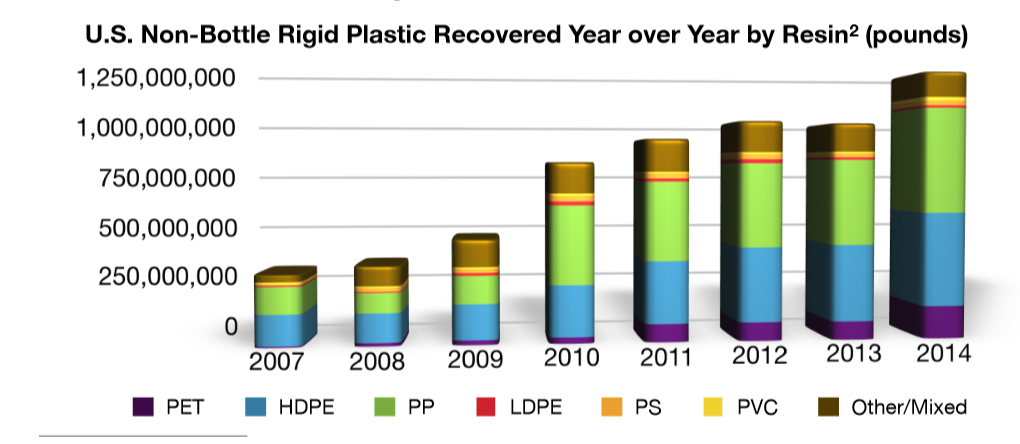According to the 2014 National Postconsumer Non-Bottle Rigid Plastic Recycling Report also indicated that the reported volume of recycled rigid plastics—tracked separately from bottles or film—is now four times greater than the volume reported in just 2007.
“This is really exciting news,” said Steve Russell, vice president of plastics for the American Chemistry Council. “The combination of more advanced sorting technologies coupled with expanded consumer access is making a positive difference, and we look forward to seeing growth in rigid plastics recycling continue.”
Moore Recycling Associates Inc., which authored the report, attributes much of the strong gain to a rebound from the 2013 Green Fence effort in China, improved bale quality, and growing standardization of plastics bales—the unit by which post-use plastics are sold after collection.
The source of non-bottle rigid plastics collected with the biggest increase in 2014 was the Pre-Picked Bale, which is generated from municipal programs and contains a mixture of products with bottles removed.
The rigid plastics category contains food containers, caps, lids, tubs, clamshells, cups and bulky items, such as buckets, carts and lawn furniture, along with used commercial scrap, such as crates, battery casings and drums. Typical end markets for these materials include automotive parts, crates, buckets, pipe, lawn and garden products, and thick-walled injection molded products.
As in prior years, polypropylene and high-density polyethylene comprised the two largest resins in this category, representing 38.3 percent and 34.1 percent, respectively, of total rigid plastics collected.
Approximately 64 percent of the 1.28 billion pounds of rigid plastics collected for recycling was processed in the United States or Canada, down slightly from 2013. The remainder was exported overseas, primarily to China.





